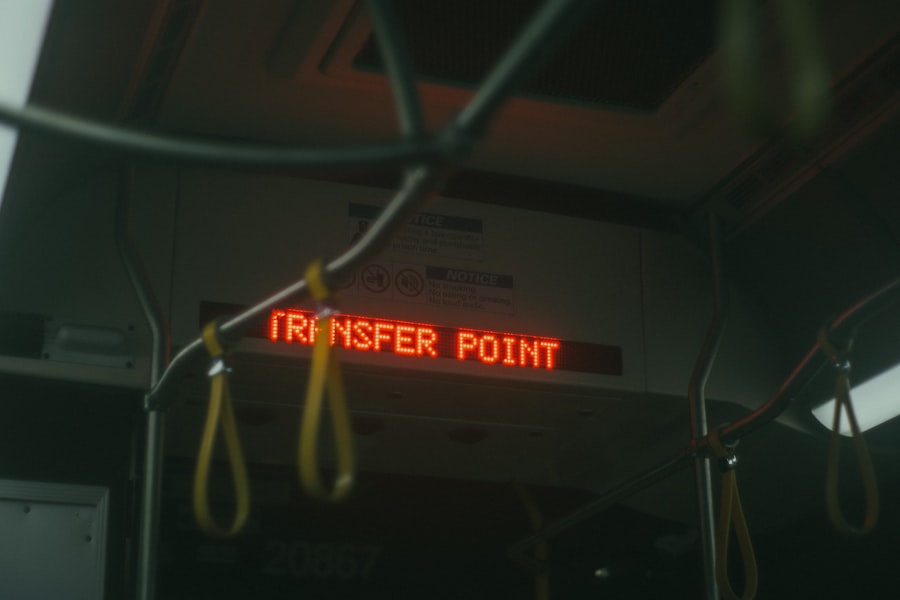Critical infrastructure refers to the essential systems and assets that are vital for the functioning of a society and economy. These infrastructures encompass a wide range of sectors, including transportation, energy, water supply, telecommunications, and healthcare. Their uninterrupted operation is crucial for maintaining public safety, economic stability, and national security.
The interdependence of these systems means that a disruption in one area can have cascading effects on others, highlighting the importance of understanding their complexities and vulnerabilities. The significance of critical infrastructure extends beyond mere functionality; it is a cornerstone of modern civilization. As societies become increasingly reliant on technology and interconnected systems, the need for robust and resilient infrastructure becomes paramount.
This reliance creates a dual challenge: while advancements in technology can enhance efficiency and connectivity, they also introduce new vulnerabilities that must be managed. Understanding critical infrastructure thus involves not only recognizing its components but also appreciating the intricate web of relationships that bind them together.
Key Takeaways
- Critical infrastructure refers to the essential systems and assets that are vital for the functioning of a society and economy.
- Global choke points are specific locations or routes that are critical for the flow of global trade and can have significant impacts if disrupted.
- Choke points can have far-reaching effects on global trade, leading to supply chain disruptions and economic instability.
- Vulnerabilities in critical infrastructure can be exploited by malicious actors, leading to potential security threats and economic damage.
- Strategies for navigating choke points include diversifying supply chains, investing in alternative routes, and enhancing resilience measures.
Identifying Global Choke Points
Global choke points are strategic locations or critical junctures in supply chains where the flow of goods, services, or information can be significantly disrupted. These choke points can take various forms, such as narrow maritime passages, key transportation hubs, or essential energy pipelines. The identification of these locations is crucial for businesses and governments alike, as they represent potential vulnerabilities that could impact global trade and security.
One of the most well-known examples of a choke point is the Strait of Hormuz, through which a significant portion of the world’s oil supply passes. A disruption in this area could lead to skyrocketing oil prices and economic instability across multiple nations. Similarly, the Panama Canal serves as a vital conduit for maritime trade between the Atlantic and Pacific Oceans.
Any obstruction in this canal could have far-reaching consequences for global shipping routes. Identifying these choke points allows stakeholders to develop strategies to mitigate risks and ensure the continued flow of essential goods and services.
Impact of Choke Points on Global Trade

The impact of choke points on global trade is profound and multifaceted. When disruptions occur at these critical junctures, they can lead to delays, increased costs, and even shortages of essential goods. For instance, a blockage in a major shipping lane can result in significant delays for cargo vessels, leading to a ripple effect throughout supply chains.
Businesses may face increased shipping costs as they seek alternative routes or methods of transportation, ultimately passing these costs onto consumers. Moreover, choke points can create geopolitical tensions as nations vie for control over these strategic locations. The competition for access to vital resources or trade routes can lead to conflicts that further disrupt global trade.
The COVID-19 pandemic highlighted these vulnerabilities when lockdowns and restrictions led to significant delays in shipping and logistics, underscoring how quickly choke points can affect economies worldwide. Understanding the implications of these choke points is essential for businesses and policymakers to navigate the complexities of global trade effectively.
Vulnerabilities in Critical Infrastructure
| Infrastructure Type | Number of Vulnerabilities | Severity Level |
|---|---|---|
| Energy | 45 | High |
| Water | 30 | Medium |
| Transportation | 55 | High |
| Communication | 20 | Low |
Critical infrastructure is inherently vulnerable due to its complexity and interdependence. Natural disasters, cyberattacks, and human error can all pose significant threats to these systems. For example, hurricanes can disrupt power grids and transportation networks, while cyberattacks can compromise data integrity and operational capabilities.
The increasing digitization of critical infrastructure has made it more susceptible to cyber threats, as malicious actors seek to exploit weaknesses in interconnected systems. Additionally, aging infrastructure presents another layer of vulnerability. Many countries are grappling with outdated systems that require significant investment to modernize.
This lack of investment can lead to failures that not only disrupt services but also endanger public safety. Addressing these vulnerabilities requires a comprehensive understanding of the risks involved and a commitment to investing in resilience measures that can withstand both natural and man-made threats.
Strategies for Navigating Choke Points
Navigating choke points effectively requires a multifaceted approach that combines risk assessment, contingency planning, and strategic partnerships. Businesses must conduct thorough analyses of their supply chains to identify potential choke points and develop contingency plans that outline alternative routes or methods of operation in case of disruptions. This proactive approach enables organizations to respond swiftly to unforeseen events and minimize their impact on operations.
Collaboration with government agencies and other stakeholders is also essential in navigating choke points. Public-private partnerships can facilitate information sharing and resource allocation during crises, ensuring that critical infrastructure remains operational. Additionally, investing in technology such as real-time monitoring systems can enhance situational awareness and enable quicker responses to disruptions.
By adopting a holistic approach that encompasses risk management, collaboration, and technological innovation, organizations can better navigate the complexities associated with global choke points.
Importance of Resilience in Critical Infrastructure

Resilience in critical infrastructure refers to the ability of systems to withstand disruptions while maintaining essential functions. This concept has gained increasing importance as societies face a growing array of threats, from natural disasters to cyberattacks. Building resilience involves not only fortifying physical assets but also fostering adaptive capacities within organizations and communities.
A resilient infrastructure system is characterized by redundancy, flexibility, and rapid recovery capabilities. Redundancy ensures that alternative pathways or resources are available in case of failure, while flexibility allows systems to adapt to changing circumstances. Rapid recovery capabilities enable organizations to restore operations quickly after a disruption occurs.
By prioritizing resilience in critical infrastructure planning and investment, societies can better prepare for future challenges and safeguard their economic stability and public safety.
Technological Innovations for Mitigating Choke Points
Technological innovations play a pivotal role in mitigating the risks associated with choke points in critical infrastructure. Advanced technologies such as artificial intelligence (AI), big data analytics, and the Internet of Things (IoT) can enhance situational awareness and improve decision-making processes during crises. For instance, AI algorithms can analyze vast amounts of data to predict potential disruptions at choke points, allowing organizations to take preemptive measures.
Moreover, blockchain technology offers promising solutions for enhancing supply chain transparency and security. By providing an immutable record of transactions, blockchain can help organizations track goods as they move through choke points, reducing the risk of fraud or tampering. Additionally, smart sensors embedded in infrastructure can provide real-time monitoring capabilities, enabling quicker responses to emerging threats or failures.
Embracing these technological innovations is essential for building more resilient critical infrastructure systems capable of navigating the complexities of global trade.
Collaborative Approaches to Addressing Critical Infrastructure Challenges
Addressing the challenges associated with critical infrastructure requires collaborative approaches that involve multiple stakeholders across sectors and borders. Governments, private sector entities, non-governmental organizations (NGOs), and communities must work together to develop comprehensive strategies that enhance resilience and mitigate risks at choke points. Public-private partnerships are particularly effective in fostering collaboration between government agencies and businesses.
These partnerships can facilitate information sharing regarding potential threats and vulnerabilities while also pooling resources for research and development initiatives aimed at improving infrastructure resilience. Additionally, international cooperation is crucial for addressing global choke points that transcend national borders. By sharing best practices and lessons learned from past experiences, countries can collectively enhance their preparedness for future challenges.
Regulatory and Policy Considerations for Choke Points
Regulatory frameworks play a vital role in shaping how critical infrastructure is managed and protected from disruptions at choke points. Policymakers must consider various factors when developing regulations that govern these infrastructures, including security standards, investment incentives, and emergency response protocols. Effective regulations should promote resilience by encouraging investment in modernizing aging infrastructure while also ensuring that security measures are in place to protect against potential threats.
Additionally, policymakers must engage with industry stakeholders to understand their needs and challenges better.
Case Studies of Successful Navigation of Choke Points
Examining case studies of successful navigation through choke points provides valuable insights into effective strategies for managing disruptions in critical infrastructure. One notable example is the response to the 2016 Panama Canal expansion project, which aimed to accommodate larger vessels known as “New Panamax” ships. The expansion required extensive planning and collaboration among various stakeholders to ensure minimal disruption during construction.
Another example is the response to Hurricane Katrina in 2005 when various agencies collaborated to restore critical infrastructure in New Orleans rapidly. The lessons learned from these experiences underscore the importance of preparedness, collaboration, and adaptability in navigating choke points effectively.
The Future of Critical Infrastructure Resilience
The future of critical infrastructure resilience will likely be shaped by ongoing technological advancements, evolving threats, and changing societal needs. As cities grow increasingly interconnected through smart technologies, the importance of building resilient systems will only intensify.
Furthermore, as climate change continues to pose significant risks to critical infrastructure worldwide, adaptation strategies will become increasingly important. This may involve rethinking urban planning approaches or investing in green technologies that promote sustainability while enhancing resilience. Ultimately, the future will require a holistic approach that integrates technology, collaboration, regulatory frameworks, and community engagement to ensure that critical infrastructure remains robust in an ever-changing world.
Global choke points are critical locations around the world where the flow of goods, energy, and information can be easily disrupted, impacting global trade and security. These strategic points are often discussed in the context of geopolitical tensions and economic stability. For a deeper understanding of how these choke points influence global dynamics, you can explore a related article on MyGeoQuest. This article provides insights into the geographical and political significance of these crucial locations and their impact on international relations.
WATCH NOW! Unlocking Disaster: 7 Choke Points That Could Fracture Our Connected World Overnight
FAQs
What are global choke points?
Global choke points are strategic locations around the world where the flow of goods, resources, or information is restricted or vulnerable to disruption. These points are critical for global trade and can have significant geopolitical and economic implications.
What are some examples of global choke points?
Examples of global choke points include the Strait of Hormuz, the Suez Canal, the Panama Canal, the Strait of Malacca, and the Bab el-Mandeb strait. These locations are vital for the transportation of oil, natural gas, and other goods, and any disruption at these points can have far-reaching consequences.
Why are global choke points important?
Global choke points are important because they are key transit routes for the majority of the world’s trade and energy supplies. Any disruption at these points can lead to supply chain disruptions, increased shipping costs, and potential conflicts between nations.
What are the potential risks associated with global choke points?
The potential risks associated with global choke points include piracy, terrorism, geopolitical tensions, and natural disasters. These risks can lead to disruptions in global trade, increased insurance costs for shipping companies, and potential conflicts between nations.
How are global choke points managed?
Global choke points are managed through international cooperation, security measures, and diplomatic efforts to ensure the safe and efficient passage of goods and resources. Additionally, some countries may invest in alternative routes or infrastructure to reduce their reliance on specific choke points.
